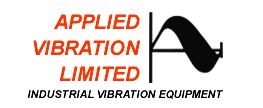 Add My Company
Add My Company
Sign In
The advantages of using a vibratory feeder, conveyor, screen or table to handle recycled materials
12-12-2019

The advantages of using a vibratory feeder, conveyor, screen or table to handle recycled materials
The materials handled within the recycling industry are vast and varied; from paper and plastics to glass and wood, metals and textiles to building materials and more – and the ways in which these materials require handling through processes arguably even more so. The advantage of vibration technology is that it too is vast and varied, and the many methods of vibration handling can be used in equipment designs that solve a range of recycling applications.
Material separation by size and dewatering
In most cases, materials need to be separated out into what is usable for recycling and what is waste. A linear vibratory screen provides efficient separation by size whilst feeding onto the next process. This is often used to separate dust from usable materials, or to remove oversize pieces from bulk product – policing the material so that the usable product is separated from anything that requires further processing. In cases of bottles, particularly glass or plastic, liquid residue can often cause a problem that can be solved with a dewatering screen. By feeding the glass or plastic over a screen, vibrating equipment can separate the liquid from the material – the material feeding onto the next process or into a container, and the liquid draining out to a separate specified area. This solution is efficient and effective, and care has been taken with vibrating screen designs to ensure that clean down is easy.
Compacting materials to settle peaks and fill to capacity
When materials such as recycled plastics, glass or metal are filled into bulk bags or IBC containers, filling the containers to maximum capacity can prove tricky. The irregular parts often fill on top of one another, rather than spreading out to the corners of the container, and can also start to ‘cone’ into a peak at the top. In order to ensure filling capacity and bag stability, a vibrating table can be implemented to compact the material – encouraging movement into the corners of the container and levelling out the peaking material at the top of the bag. Low level vibratory tables sit close to the floor, and as container filling issues are usually detected prior to hopper installations, can be designed to suit pre-existing filling set ups.
For more information on The advantages of using a vibratory feeder, conveyor, screen or table to handle recycled materials talk to Applied Vibration Ltd
Enquire Now
More News
List your company on FindTheNeedle.
